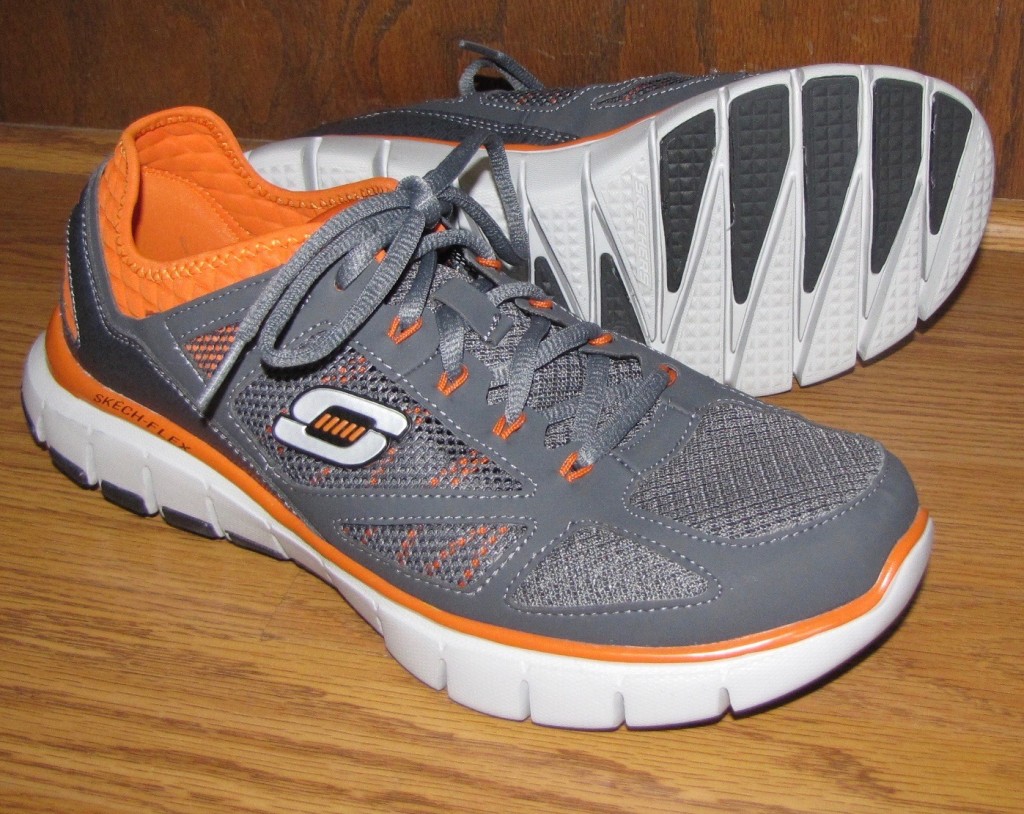If you’re going to play basketball, wear basketball shoes. If you’re going to play tennis, wear tennis shoes. If you’re going for a run, wear running shoes. So what type of shoes should you wear when you go to the gym to lift, do some cardio and stretch? The answer is a shoe that fits the job. Something that gives support, is lightweight and breathes. It doesn’t need to be a cross trainer unless you plan on doing a lot of ploymetrics and/or running around on artificial grass. If you are doing squats, lunges and leg press, for example, you want a shoe that has lateral support and has a flat sole. NOT A RUNNING SHOE! I can’t tell you how many times I see people exercising in running shoes just because it has a big swoosh on the side. Remember, running shoes are designed to propel you forward. Most of them have built up cushioned heels for when your heel strikes the asphalt. FYI as far as running techniques go, this is mechanically incorrect and very dangerous. In addition, running shoes have zero, zilch, nada lateral support. I cringe when I see people doing lunges in the gym wearing running shoes. Often they have a difficult time keeping their front heel down so that their knee crosses over their toes. That’s a lot of pressure on the knee. Lunging in running shoes also causes the foot to roll out laterally (supinate) towards their pinky toe. This can cause undo stress and pressure on the feet, ankles, knees and hips.
I trained a young woman, who was complaining about pain behind her knee. She had been taking classes at Monkey Bar Gym and said that whenever she did lateral jumps her knee would hurt. She demonstrated for me, and I observed her ankles rolling. Looking down, I pointed at her Mizuno running shoes and asked if those were the shoes she trained in. She said yes. Rhetorically I asked if the MBG instructor told her that running shoes were for running and that she would benefit by wearing cross trainers for their classes. That day she picked up a pair of Under Armour cross trainers. The next time I saw her, she said her knee pain had gone away. Problem solved.
I’m dating myself, but do you remember when ALL the running shoes were promoting their anti-pronation shoes? It was just a good piece of marketing and everybody bought into it. Let me educate you about your feet. When you run, jump and push off your feet, you are primarily suppose to push off the big toe. It has the biggest joint and helps to keep the direction of force in line with your ankle, leg and hip. So if you’re looking to improve your running, jumping and pushing a slight pronation is not a bad thing. As an aside, be careful when you’re buying arch supports or shoe inserts. These can contribute to supination which again is not good.
When was the last time you tried on a pair of athletic shoes? There’s not much to them, and these days they require very little, if any, break in time. Do you remember when you had to wear a pair of shoes for a few weeks to break them in? Now, it’s out of the box, onto your feet and you’re good-to-go on the court, path, track, turf, etc.
How often should you replace your shoes? That depends on how much mileage you put on them, how often you wear them and how hard you are on the shoe. As a rule of thumb, I’d say every six months. Realize that shoes break down over time even if you don’t visibly see wear and tear. Just by standing in shoes, you will compress the material so that over time, they will feel like bedroom slippers. Might feel comfy but not safe or practical for exercise. Replacing my tennis shoes are more obvious since the outer sole wears down much faster than the inside. Because of court tendencies, and you can say this about volleyball, basketball, soccer and many other sports, the right and left shoes don’t wear evenly or in the same place.
So, Eric, what’s with the picture of these Sketchers? These are my second pair and are labeled as athletic sneakers. Not cross training, running, basketball or walking shoes. I had hit a point with my previous shoes where my feet were getting tired and my shins and knees were starting to hurt. That is a telltale sign that it’s time for new shoes for me. I stopped by DSW (they can have excellent deals in the sales racks in the back) and tried on a lot of shoes. Nothing felt good. I finally asked a salesperson for help and told her that I was looking for a comfortable shoe that could handle several hours of standing a day and some exercise. She showed me the Sketchers and indicated there was memory foam inside. I slipped on the shoe and it fit like a glove. The top of the shoe is mesh, so it breathes very well and does not constrict my foot at all. The funny thing about your feet is that you might be experiencing hip, back or even neck pain, and it could be solved with a new pair of shoes. Feel free to contact me when you buy your next pair, and we can see which shoe is the best fit.

